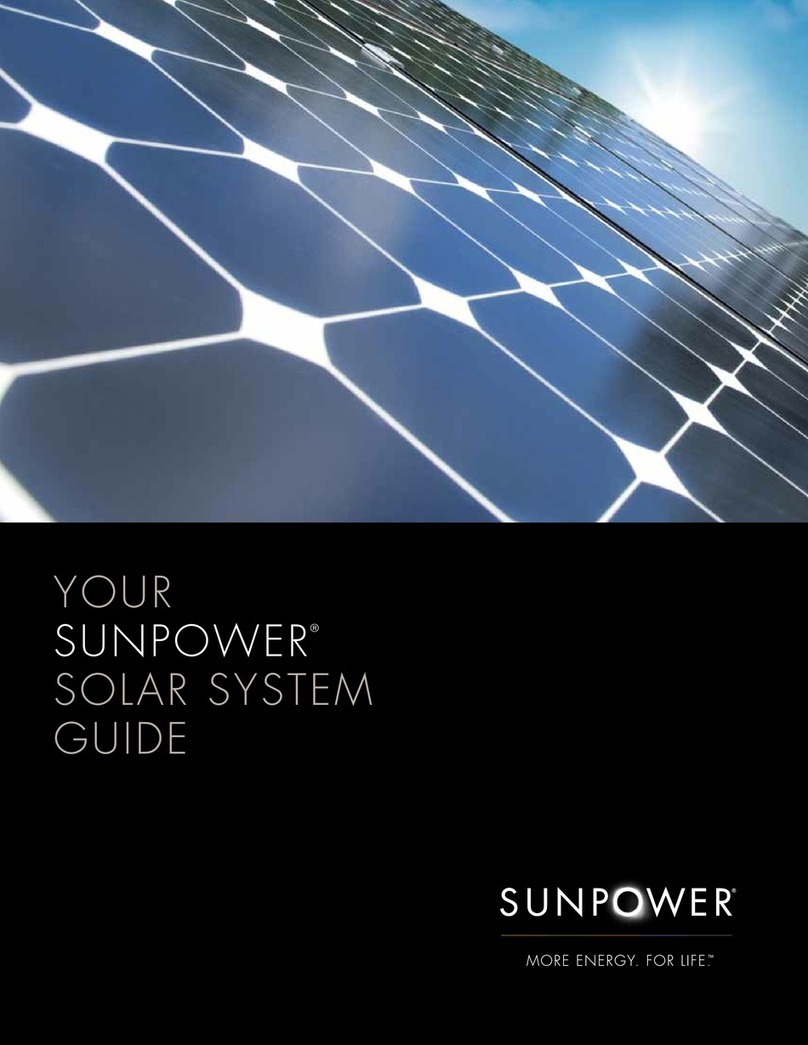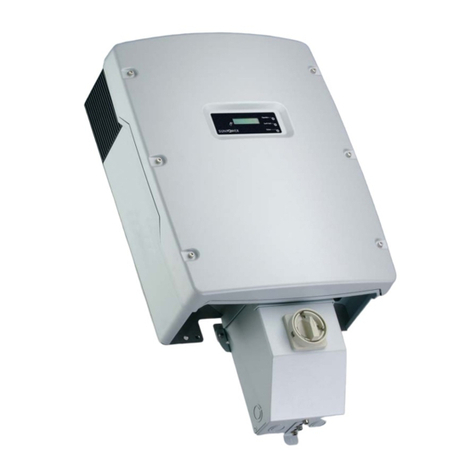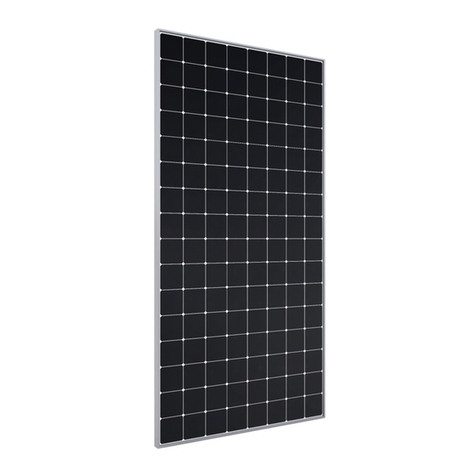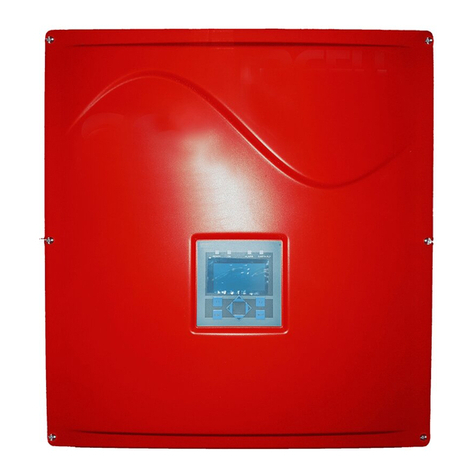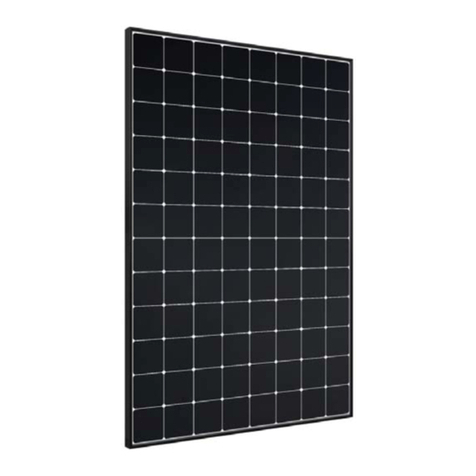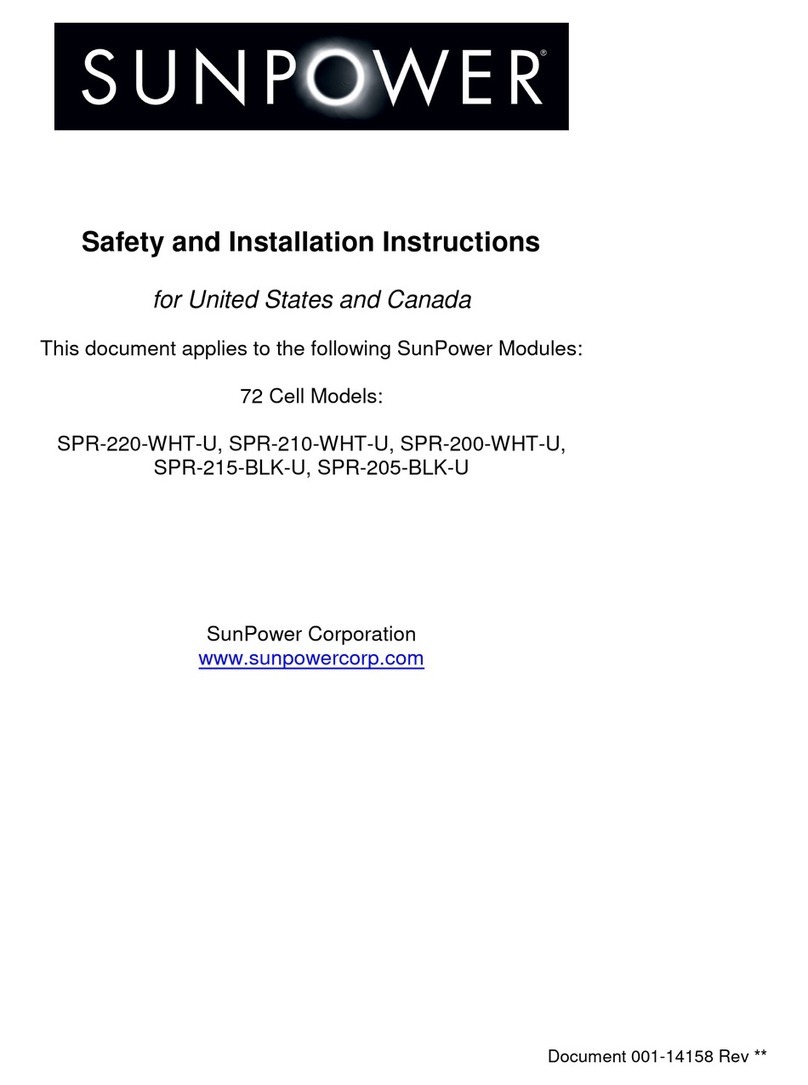
975-0335-01-01 vii
Important Safety Instructions
SAVE THESE INSTRUCTIONS—This manual contains important instructions that must be followed
during the installation and maintenance of the SunPower Solar Inverter.
1. Before installing and using the inverter, read all instructions and cautionary markings on the inverter,
wiring box, and all appropriate sections of this guide.
2. To reduce risk of fire hazard, do not cover or obstruct the heat sink.
3. Under some conditions, the inverter heat sink can reach temperatures hot enough to cause skin burns if
accidentally touched. Ensure that the inverter is located away from normal traffic areas.
4. Use only accessories recommended or sold by the manufacturer. Doing otherwise may result in a risk
of fire, electric shock, or injury to persons.
5. To avoid a risk of fire and electric shock, make sure that existing wiring is in good condition and that
wire is not undersized. Do not operate the inverter with damaged or substandard wiring.
6. Do not operate the inverter if it has received a sharp blow, been dropped, or otherwise damaged in any
way. If the inverter is damaged, consult your product warranty.
7. Do not disassemble the inverter. It contains no user-serviceable parts. See warranty for instructions on
obtaining service. Attempting to service the inverter yourself may result in a risk of electrical shock or
fire and will void the factory warranty.
8. Authorized service personnel should reduce the risk of electrical shock by disconnecting both AC and
DC power from the inverter before attempting any maintenance or cleaning or working on any circuits
connected to the inverter. Turning off controls will not reduce this risk. Internal capacitors remain
charged for 5 minutes after disconnecting all sources of power.
9. Normally grounded conductors may be ungrounded and energized when a ground fault is indicated.
10. The inverter must be connected to an AC equipment-grounding conductor directly and a DC
grounding electrode conductor to a single point ground.
11. The AC Neutral connection is for voltage sensing only and is not used as a current carrying conductor,
nor is it bonded to ground.
Observe the clearance recommendations as described on page 2–7. Do not install the inverter in a zero-
clearance or non-ventilated compartment. Overheating may result.
WARNING
The following warnings identify conditions or practices that could result in personal injury or loss of life.
CAUTION
The following caution identifies conditions or practices that could result in damage to the unit or other
equipment.






